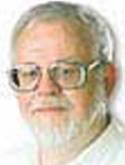
Strolling On The Poles And The Moon
I spent an unforgettable Halloween, the new feast day for kids, surrounded by real mummies, authentic shrunken heads and at least one ghost. I wouldn't have been surprised to find among the costumed guests the real Count Dracula licking a death mask.
The location was the downtown loft/museum of the unique Billy Jamieson, dressed appropriately as a barker. The man who helped repatriate the mummy of Ramesses I to the land he once ruled as pharaoh -and there are many other exploits too - but I wrote about them in a Feb. 1 blog titled Come Smell My Shrunken Head. (That's one of my favourite headlines out of the thousands I have written over the decades.)
We were surrounded by the curiousities you used to see in midway museums but there was also, if you had just a routine imagination, the smell of the sea, the vistas of the ice sheets around the Poles, the warm stink of the jungle, and the thrill of walking far beyond the package tours.
I grew up in a town so small - as someone has written - that you didn't have to use your turning signals because everyone knew where you were going. Halloween for me was an old sheet and some coal dust for the face and hands. All I can afford, but no one in Chesley wore costumes like the ones which are routine today. But then Halloween has exploded as an annual event. If we had decorated our houses in the Fifties the way they do in 2009, neighbours would wonder if you should be committed.
So Jamieson's party is the pinnacle of my Halloween experience. To top that, I would have to be taken by time machine back to the sack of Rome.
But before it began, the Ontario-Nunavut chapter of the Explorers Club had a speech and honours presentation. This is a branch of the famous Explorers' Club of New York, the launching pad of countless expeditions and adventures, whose members have walked the Moon and visited the Poles and the deepest trenches of the sea so many times that they talk about it as if they were going to the corner store.
And it all came flooding back as I listened to their tales and the conversation around me of people who trot around the Arctic each summer and wonder about just how many great ruins are still hidde
 n in the mountains around Machu Picchu.
n in the mountains around Machu Picchu.This is the stuff of my boyhood daydreams. I have forgotten all those books about epic explorations that I used to devour. It comes back sporadically, like when I cried when I looked at the diary of Scott of the Antarctic in the British Museum. He perished nearly a century ago. And as Captain Scott succumbed and froze to death, he scrawled in pencil a plea for those left behind to look after his family. And then the pencil trailed off.
There was the movie and the book, and nations of boys who wondered if they had the stuff to walk out of the tent into a blizzard and sure death, as one of Scott's companions did when he didn't want to be a burden.
The guest of honour for the night - detained elsewhere to give an important lecture- was Dr. Wade Davis, described in a major interview that day as a Canadian Indiana Jones. Davis carries a business card saying he is Explorer-in-Residence for the National Geographic. He worries about our vanishing cultures, about the disappearances of language. He is quoted as saying language is the canary in the coal mine. The world should fear the thousands of languages slipping from its memory.
Tim Leslie gave a speech on the atmosphere from the perspective of a former major who is now director of flying operations for the National Research Council. Among those being honoured was Dr. Louis Fortier, who knows more about the thickness of the ice above Canada than anyone. From the heights to the depths.
It makes me almost ashamed that I am about to lounge on the warm sands of Cuba, sipping the endless drinks, when I should be off on the headwaters of some great river. trying for a glimpse of a tiny tribe that has not yet been spotted or ruined by civilization. But then they might be headhunters and there are enough dried samples of their work around the walls of Jamieson's museum.










No comments:
Post a Comment